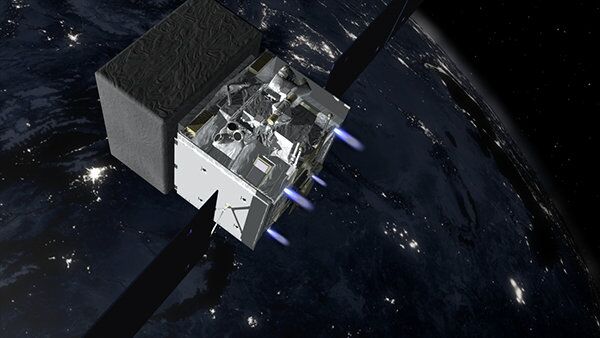WASHINGTON, May 2 (RIA Novosti) – NASA scientists provided details this week of how they dodged a 1.5-ton bullet in space last year when they had to fire the thruster engines on the Fermi Gamma-ray Telescope to nudge it out of the way and narrowly avoid a collision with a 26-year-old defunct Soviet-era satellite.
NASA said it learned of the possible collision on March 29, 2012 when it received an automatically generated report indicating that the $690 million Fermi Space Telescope and the Soviet Cosmos 1805 satellite would pass within 700 feet (213 meters) of each other in a week.
Fermi mission scientists monitored the impending close call and then determined that the two spacecraft would actually pass within 30 milliseconds of each other.
“These are objects of several tons each, as wide as a small airplane, traveling 20 times faster than a bullet. The Fermi mission would be over,” if the two collided, Eric Stoneking, the engineer who controls Fermi’s orientation in the sky, said in a statement on NASA’s website.
The scientists had two choices: use Fermi’s deorbit propulsion engines to divert it from its collision course with the Soviet space junk, or allow the two to collide.
Deorbit propulsion engines are designed to take spacecraft out of orbit at the end of their mission to keep down the amount of junk floating around in space. NASA fits newer satellites with deorbit engines because “the only way to prevent the problem of space junk, like Cosmos 1805, is to not litter in the first place,” Francis Reddy, a science writer at the US space agency, told RIA Novosti.
If deorbit engines were to fail at the end of a mission, there would be no impact on the spacecraft’s ability to collect data. But using the engines in the middle of a mission was risky, because of their unpredictability. Fermi is expected to remain in orbit until 2018.
“We had to decide, of two disasters – a collision with another satellite or fatal failure with the propulsion system – which was more defendable,” Julie McEnery, the lead project engineer on the Fermi mission said.
NASA opted to use the thrusters to slightly change Fermi’s path, waiting until 18 hours before the estimated impact between the two spacecraft to make sure they really were on a collision course.
Fermi parked its solar arrays and retracted its high-gain antenna to protect them during the engine burn. Then, Stoneking altered Fermi’s direction, the deorbit engines were fired and the telescope moved a comfortable six miles (9.6 kilometers) out of the way of the oncoming Soviet space junk.
Had the two collided, they would have released energy equivalent to two tons of explosives. Instead, Fermi is still looking for dark matter and black holes, and Cosmos 1805 is another piece of junk still floating around in space.


